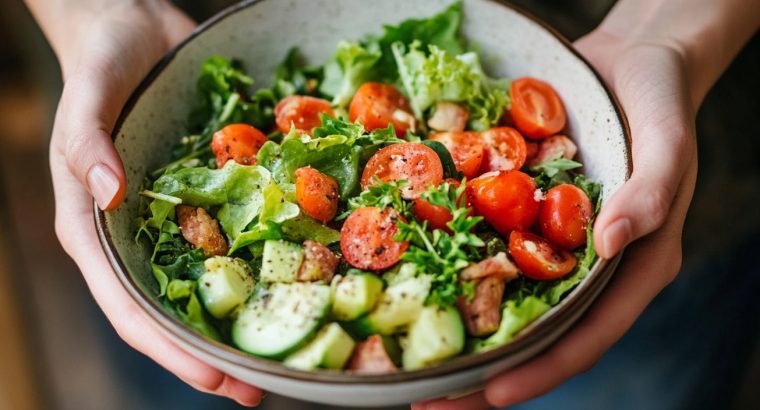Healthy Eating on a Budget: Tips for Diabetics
Managing diabetes effectively requires a balanced and nutritious diet, which is crucial for maintaining stable blood sugar levels. However, the notion of eating healthy often comes with the misperception of being expensive. For diabetics, managing diet on a tight budget can seem daunting, but it is entirely feasible with the right strategies and planning. This article offers practical tips and insights for diabetics looking to maintain a healthy diet without breaking the bank.
Understanding Diabetes and Dietary Requirements
Before delving into budget-friendly tips, it is essential to understand the dietary needs of diabetics. The main goal is to manage blood glucose levels and weight effectively through a balanced intake of:
- Carbohydrates: Consuming carbohydrates that are high in fiber and have a low glycemic index can help maintain stable blood sugar levels.
- Proteins: Lean proteins help in managing hunger and boosting metabolism without impacting blood sugar significantly.
- Healthy Fats: Fats from sources like nuts, seeds, and avocados are essential for overall health.
- Vitamins and Minerals: Ensuring a diet rich in vitamins and minerals supports general health and aids in diabetes management.
1. Plan Meals in Advance
Meal planning is a cornerstone of healthy eating on a budget. It minimizes food waste, reduces the need for last-minute expensive purchases, and ensures a balanced intake of nutrients. Here are some steps to make meal planning effective:
- Weekly Menu: Create a weekly menu that includes breakfast, lunch, dinner, and snacks, focusing on incorporating a mix of macronutrients in each meal.
- Grocery List: Stick to a list that includes only the necessities required to prepare meals for the week.
- Prep Ahead: Cooking in bulk can save both time and money. Preparing large portions and storing them appropriately can prevent frequent, costly trips to the grocery store.
2. Choose Whole Foods Over Processed Foods
Whole foods are generally cheaper per serving and healthier for blood sugar management. Processed foods often contain hidden sugars and unhealthy fats, which can spike blood glucose levels. Tips for prioritizing whole foods include:
- Whole Grains: Items like brown rice, oats, and quinoa are cost-effective and provide sustained energy.
- Fruits and Vegetables: Buy in-season produce, which is usually less expensive and fresher. Frozen fruits and veggies are also convenient and conserve nutrients.
- Lean Protein Sources: Consider less expensive protein sources such as lentils, beans, eggs, tofu, and canned fish.
3. Make Use of Coupons and Sales
Utilizing discounts and promotional offers can drastically cut your grocery expenses. Here’s how:
- Coupons: Look for coupons in newspapers, online, or store apps.
- Loyalty Programs: Many stores offer discounts to loyalty program members.
- Sales: Stock up on staple foods when they are on sale and properly store or freeze them for future use.
4. Shop Smart
Smart shopping strategies can lead to significant savings:
- Bulk Buying: Purchase items like grains, nuts, and seeds in bulk. They have long shelf lives and are often cheaper when bought in larger quantities.
- Generic Brands: Opt for store-brand products which are often cheaper but similar in quality to national brands.
- Avoid Impulse Buys: Stick to your list and avoid shopping when you’re hungry, which can lead to unnecessary purchases.
5. Cook at Home
Dining out or ordering in is often more expensive and less healthy than cooking at home. Homemade meals allow full control over ingredients to ensure they meet diabetic dietary needs.
Simple Meal Ideas for Diabetics:
- Breakfast: Steel-cut oats topped with berries and a sprinkle of nuts.
- Lunch: Whole grain wrap with lean turkey, lettuce, tomato, and hummus.
- Dinner: Stir-fried tofu with a variety of colorful vegetables and brown rice.
- Snacks: An apple with a tablespoon of almond butter.
6. Stay Informed
Knowledge is power, especially when managing a condition like diabetes. Staying informed about diabetes and nutrition through reliable sources can provide fresh insights and ideas that are both budget-friendly and healthy.
- Educational Resources: Utilize free diabetes education programs or nutritional workshops offered by community centers or health organizations.
- Online Communities: Join diabetic-focused forums or social media groups to exchange tips and recipes.
7. Embrace Plant-Based Eating
Plant-based diets are rich in fiber, vitamins, and minerals while typically being more affordable than a diet heavy in meat. Some benefits include:
- Cost-Effectiveness: Ingredients like beans, lentils, and chickpeas are versatile and inexpensive sources of protein.
- Health Benefits: Plant-based meals are generally lower in saturated fat and can improve heart health, a common concern for diabetics.
8. Monitor Portion Sizes
Eating in moderation can prevent overeating and consequent glucose spikes while extending food supplies. Using smaller plates or measuring portions can lead to healthier eating habits without feeling deprived.
9. Grow Your Own Food
Even if you don’t have access to a garden, many herbs and vegetables can be grown in small spaces like balconies or windowsills. Home gardening can be a cost-effective way to have fresh produce available year-round and can also be a rewarding hobby.
- Herbs: Basil, parsley, and cilantro are easy to grow in pots.
- Vegetables: Leafy greens such as spinach or lettuce can thrive in small containers.
Conclusion
Eating healthy on a budget is not only possible but can significantly improve the quality of life for diabetics. By planning, shopping wisely, and cooking at home, it is possible to enjoy nutritious meals that do not strain the budget. Staying informed and making small, sustainable changes can have profound impacts on diabetes management and overall well-being. Embrace these strategies to support your health and your wallet.

